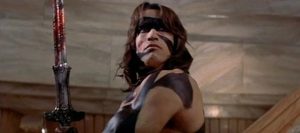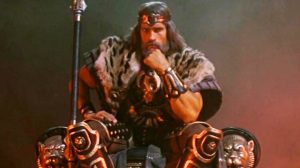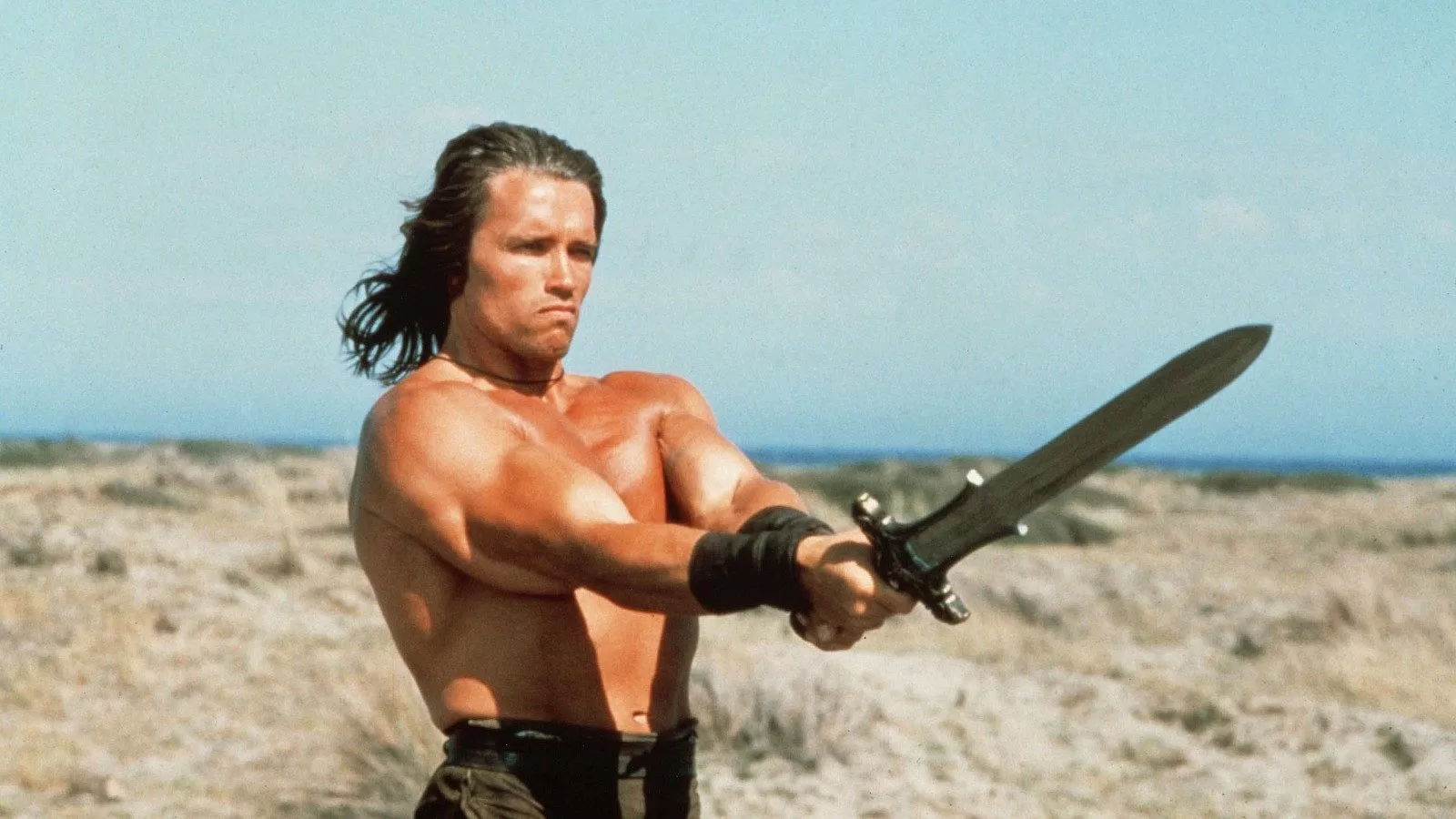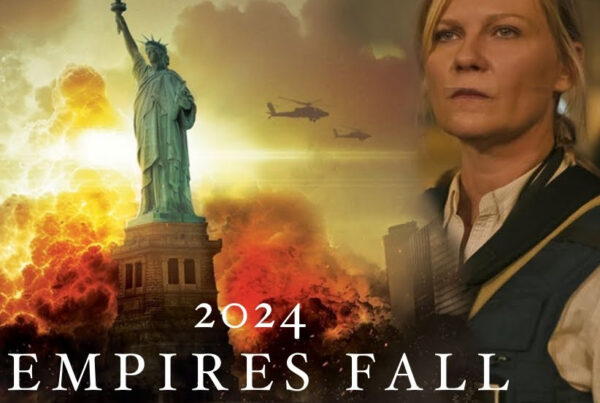Beyond the Horizon of the Spectacular Fairy Tale World
What makes a work a masterpiece is the axiomatic consistency and the universality of its message. The deeper the ideological-philosophical foundation of a mental-intellectual creation goes, the more it approaches an emancipated, idealistic postulate. Only when it has survived the corrosion of its inherent placenta, quenched the urge for perfection of its creator, can one speak of a cultural phenomenon. This emphatically includes John Milius’ adaptation of Robert E. Howard’s work – Conan the Barbarian.
At first glance, as in every classic epic, the eternal clash between good and evil unfolds here. But in a bold poetic complexity that springs from the Nietzschean Apollonian-Dionysian duality. A tribute to aesthetic metaphysics that not only transcends the frames of its genre but the canvas of the geopolitical factors and aspects of its time. Robert E. Howard’s short stories serve only as a rough sketch upon which Milius reflects the artistic impulse and turns it into a monumental work, full of symbolism and philosophical principles. Essential semantic building blocks, such as ‘the secret of steel’ and Conan’s prayer to Crom, are not present in the original writings.
The Birth of the Logos from the Spirit of the Mythos
The entire world of ideas of Conan the Barbarian carries a distinctly mythical character. A composition of real, fantastic and traditional elements, alloyed in a unique artefact, that laid the foundation for a new genre – ‘heroic fantasy’. ‘Myth is the beginning and end of the story’ – claims the German composer and knight of art-mythology Richard Wagner. If we may paraphrase him, then myth is the story itself. It is the essential embodiment of the ideological figuration of reality, the conceptual image of things, identified with the things themselves as such, and quite substantially so. ‘Every myth is a symbol, but not every symbol is a myth’1 (Alexey Losev). This essential entanglement between mythos and logos and their relationship to each other, Alexander Dugin describes as a process of emancipation of the logos from the mythos.2 Something we can only perceive peripherally in Milius’ depiction. It remains in the mythical realm and takes place exclusively in the macrocosm of male destiny. In the essential, imperative existence of man, in his heroic maturation to the logos, while the world may not bend to his word, but to the will of his sword.
The Circle as a Topographical Component

And the world on which Conan, the taciturn barbarian dwells, is the ecumene of dark, demonic nature according to all laws of chthonism and animism. If we consider the topology according to Aristotle’s teaching not as an independent area ripped from the things that inhabit it, but as the real, material expression of these things, a homogeneous time and space unit unfolds before us. Thus, in a natural topos, the diversity of the cultures and places depicted in the action blends and welds together. ‘For what matters is not where and why a thing comes, but whither it moves’3 (Alexander Dugin). And since the thing always goes to itself, to become itself, the Wheel of Pain is the actual topographic impulse to be considered. Conan moves towards his own being, makes himself, circles around his own centre. But the allegory of this wheel is not exhausted with the man-becoming of the young Cimmerian lad. It has a summarising symbolism and serves as a starting point for the entire line of ideas. In it nests the tragedy of the Dionysian Conan, driven by instinct and intoxication. The infinitely circling movement of time around eternity, the striving to reach this eternity, this centre, is futile but nevertheless inevitable. In this paradox lies the actual pain of the wheel. And only with the departure from this circle does Conan’s painful ascent to the Apollonian super-reason, prudence and vertical order begin.
From the Dionysian Twilight
He carries this circle as an amulet and only when he leaves his twilight state, he tears the circle symbol from his chest. Thus, the ever-becoming, eternally circling barbarian comes to the light of the logos – the martial virtue, the solar wisdom and justice. The manifest of this Apollonian awakening is Valeria’s cremation – where no flame could be lit so far, the tongues of providence’s fire break out with full force and sweeping violence, like a call, like a proclamation. The commandment of steel springs like a spark of sweat from Crom’s forge. Crom – a ‘blood brother’ of Zeus, who carries within him the absolute power, the vertical cosmic axis, the patriarchal order and the male origin. As the Russian philosopher Alexander Dugin writes about the high Olympic deities: ‘The bright patriarchal gods of the solar-vertical-hierarchical order are the direct ancestors of the Logos.’4
The Secret of Steel and the Secret of Flesh
If the causa efficiens, the external cause of motion, of Conan is revenge for his murdered parents, then his causa finalis is clearly the unravelling of the secret of steel. To achieve this, he must descend into the chthonic, dark and cold lodges of the ‘Great Mother’. Her being is the flesh – the matter, the chaos, the earthly, the perishable. Like the snake itself, she poisons and swallows reason, numbs the will, seduces to the lowest carnal desires. This anti-order, this temple of nothing completes the specific three-layered structure ‘Heaven-Earth-Hell’ for each mythology. As antithesis of this cult appears the traditional, patriarchal legacy of steel and its divine genesis. Forged in the fight of the gods with the titans, steel is the material expression of creative will, the absolute constancy of high order. A symbol of hardness and loyalty – an artefact of eternity. The key to overcoming the perishable, immanent and all-too-human. Only when the visible, tangible, present and phenomenal is repelled, the implosion into oneself succeeds – when the sensual and material is broken through the inner prism, the madness of the superman arises. The daring leap into the abyss – the birth of the idea, the flash of genius.
Where is the lightning that should lick you with its tongue? Where is the madness with which you should be inoculated? See, I teach you the superman: he is this lightning, he is this madness!5
From Barbarian to Ruler

Having seized the divine within himself, born out of the Dionysian twilight, Conan acquires a new trait. He becomes thoughtful and sentimental, even poetic; he plunges into the primordial sources of his existence. His hyperanthropic will is clarified in his prayer to Crom. He is the centre; he is the victor over being and nothingness. This stark announcement triumphs with full, victorious expression in the turning of the fire bowl. Now he is the centre and the pivot point. He is the bearer of the raised, vertical sword – the sceptre of legal form. The harbinger and creator ‘of the future, … of the inevitable, of the necessary, of the impossible’.6
Footnotes
1Alexey Losev, The Problem of Symbolism and Realistic Art
2Alexander Dugin, ‘The Dionysian Logos – Mythos and Logos, on 15 November 2019 – geopolitika.ru
3Alexander Dugin. ‘Noomachy, The Twilight Logos, Between Chaos and Order’ — Den TV – YouTube
4Alexander Dugin, ‘The Dionysian Logos, The Gods of the Logos’, on 15 November 2019 – geopolitika.ru
5Friedrich Nietzsche, Thus Spoke Zarathustra
6Alexander Dugin, ‘Friedrich Nietzsche – The Path to the Übermensch’ — nietzsche.ru









